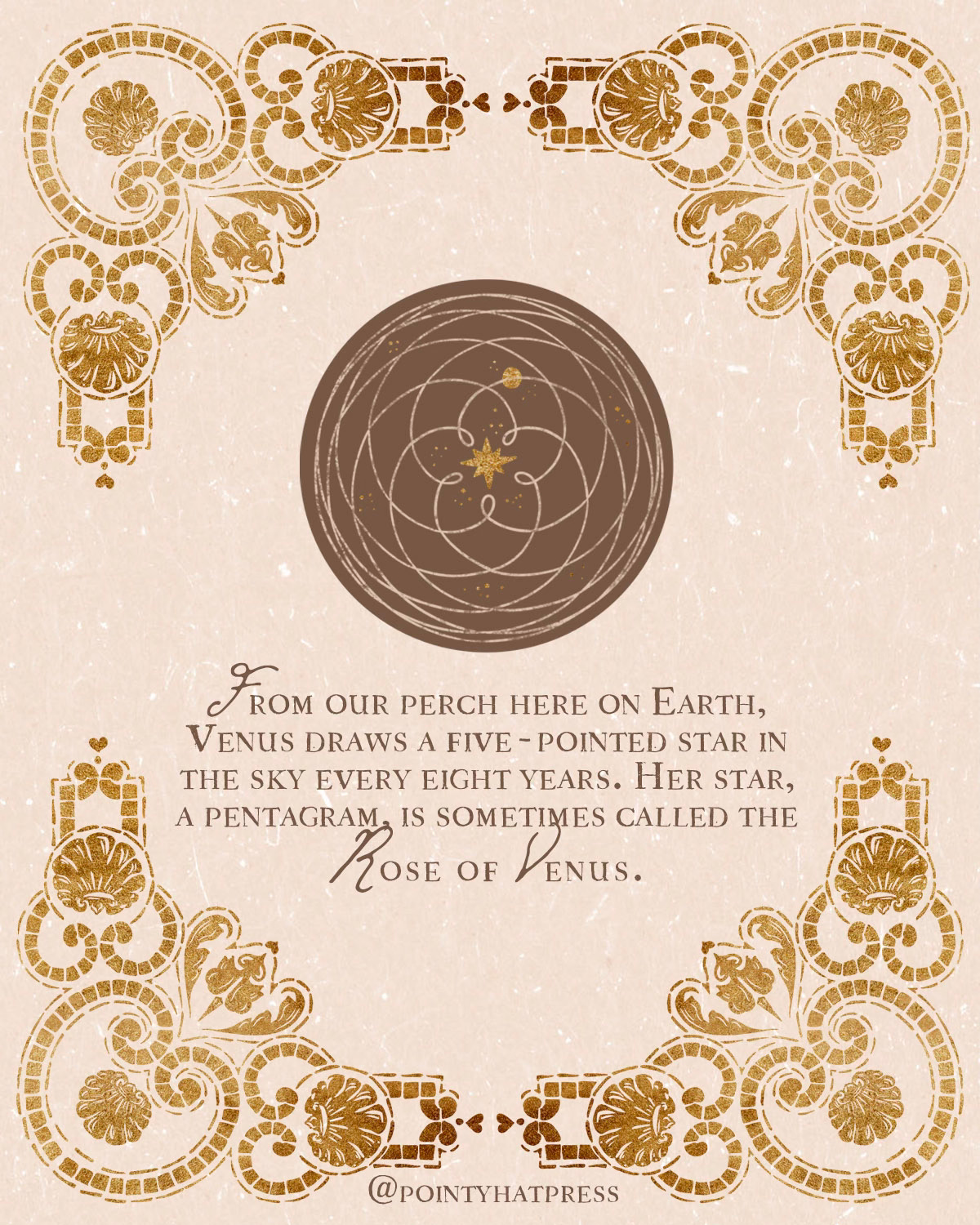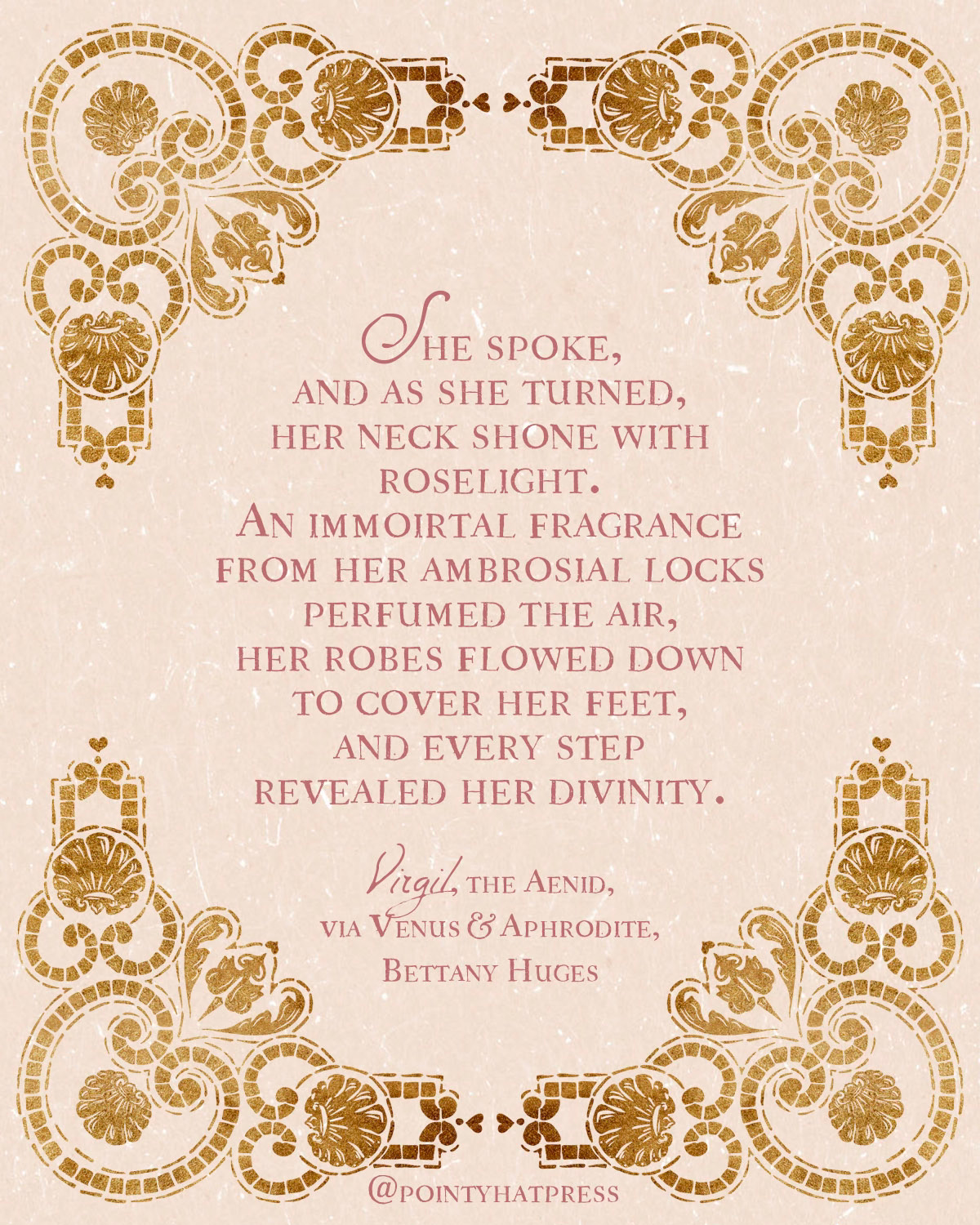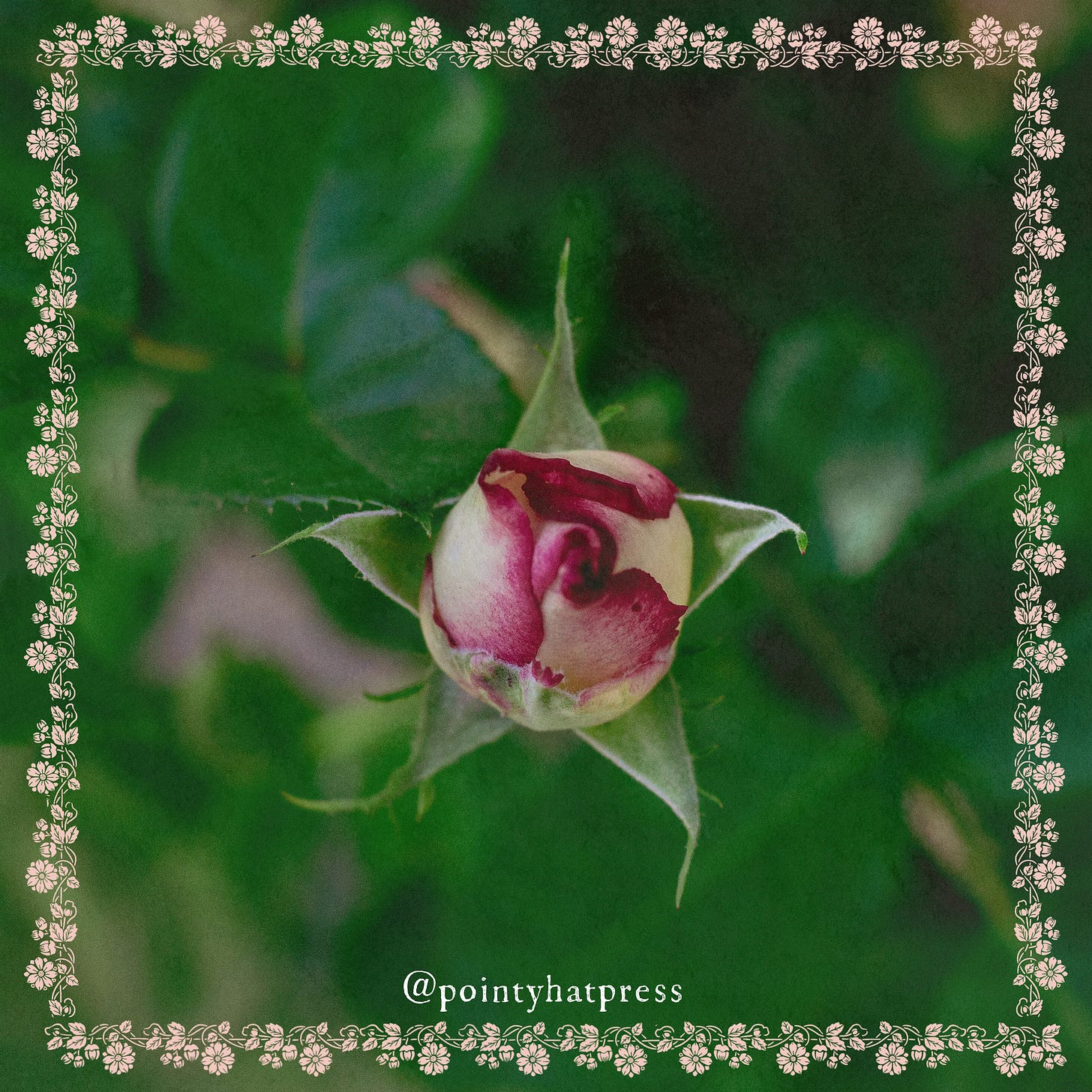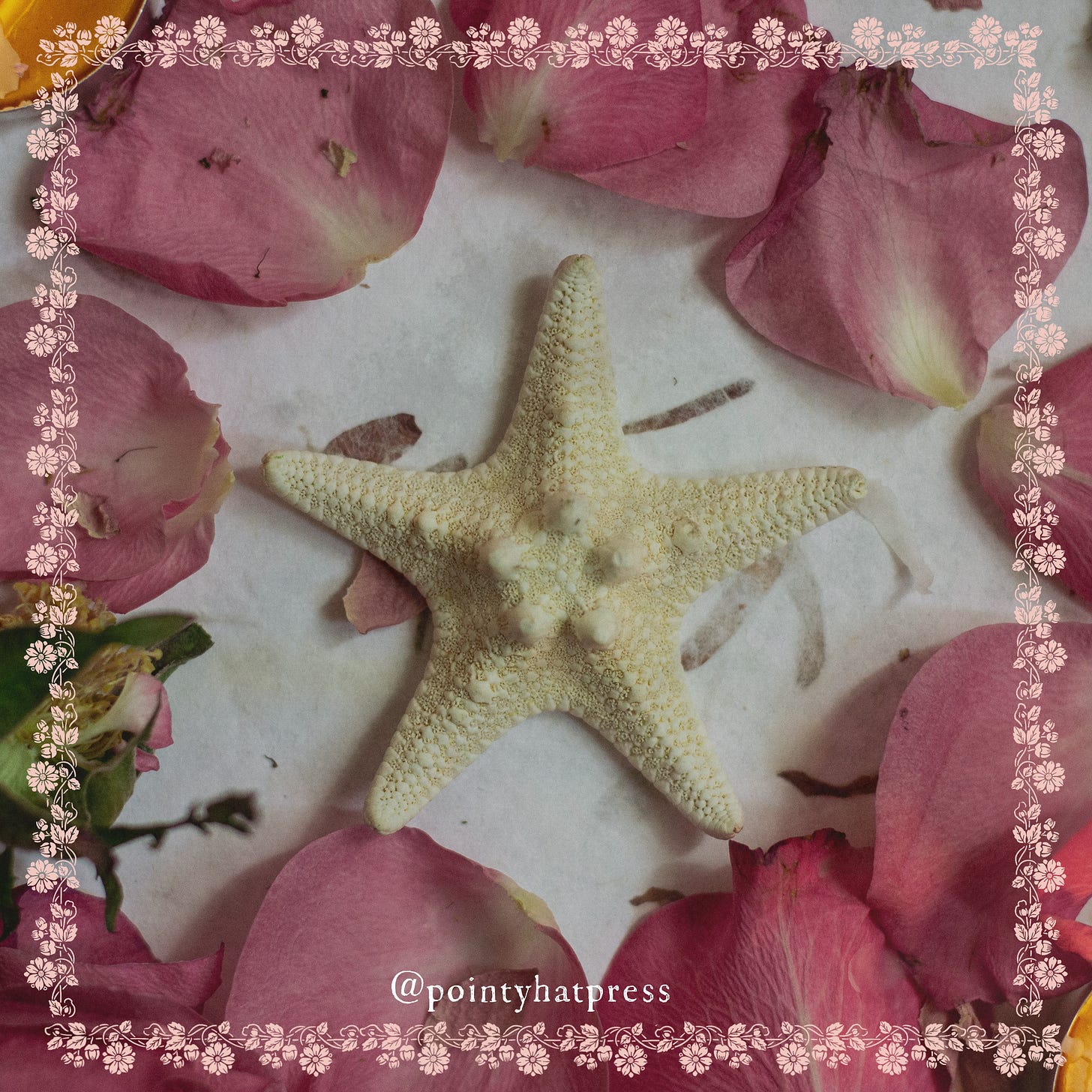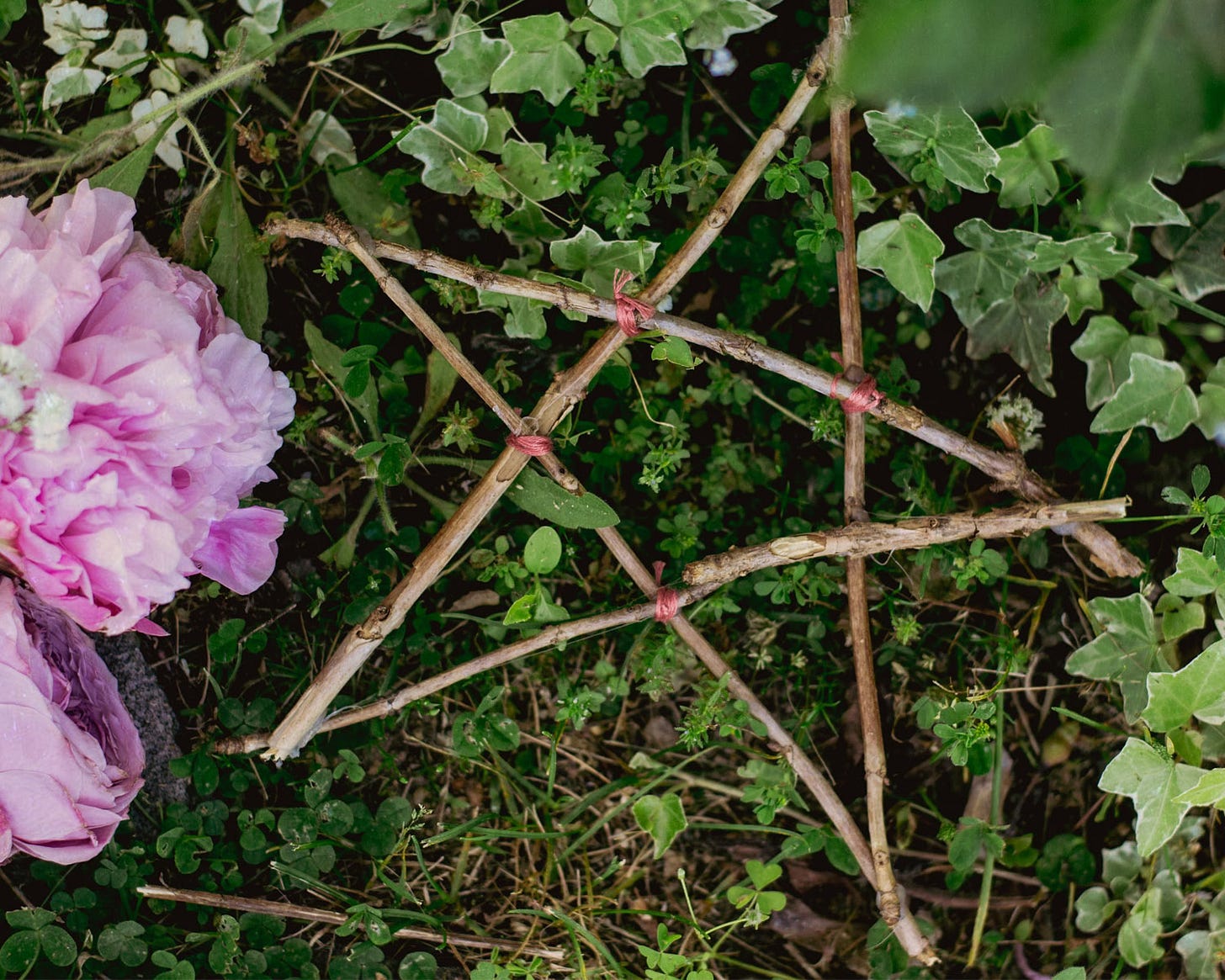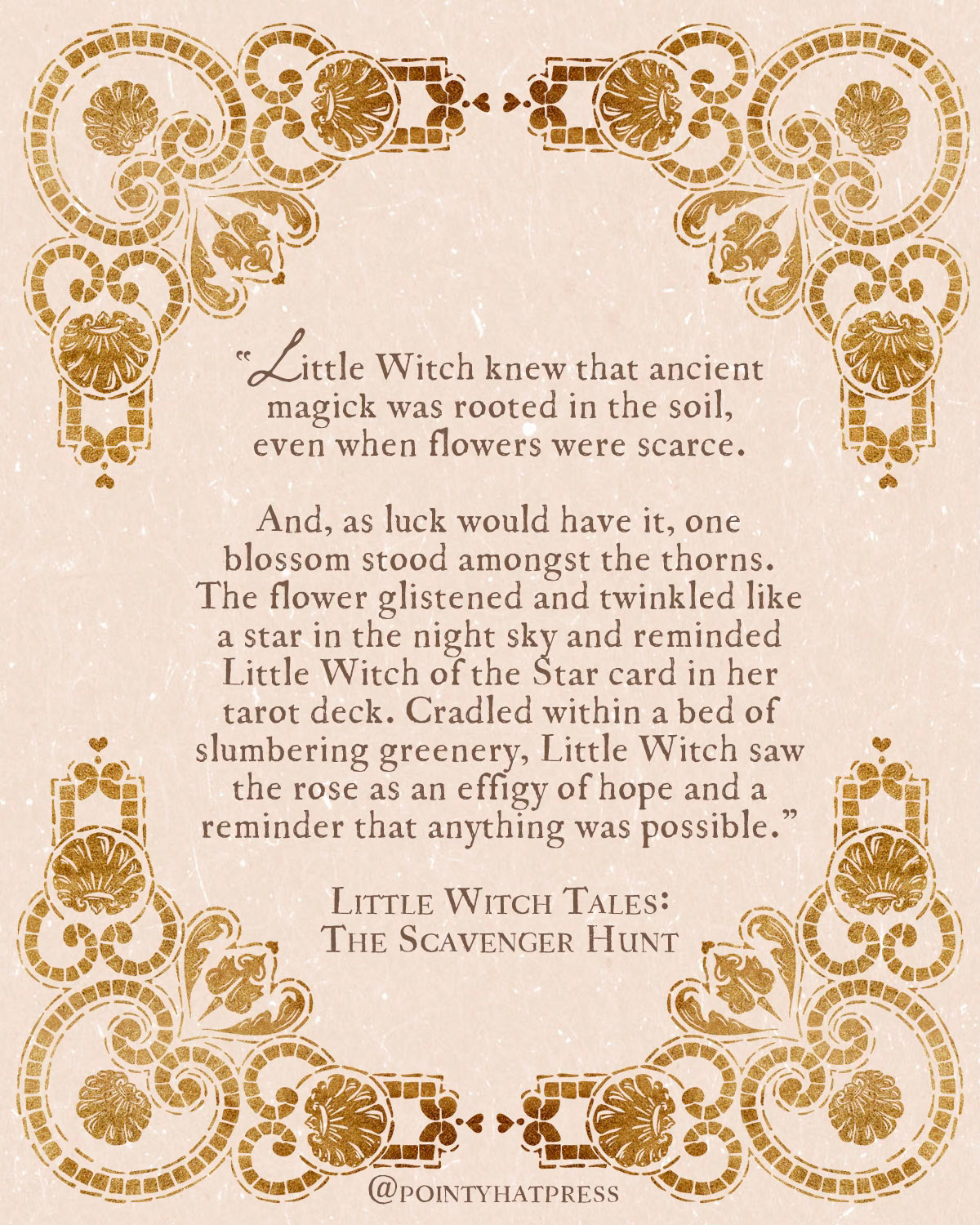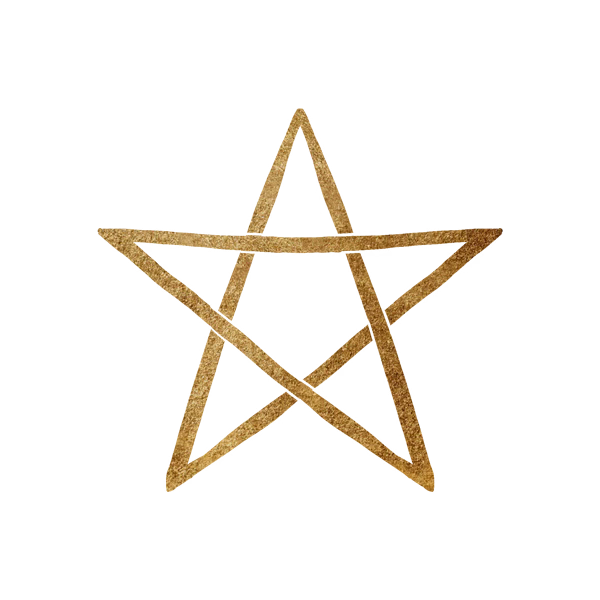May's moon is nicknamed the Flower Moon, Planting Moon, Milk Moon, Budding Moon, and Egg-Laying Moon. Dedicated to blossoming plants and the humans who care for them, May's moon is also known as the Mother Moon.
In the days between Beltane and Litha, spring is in full swing. Wildflowers soften our steps, and pollinators haunt the meadows. The earth remembers her abundance.
Inspired by our fifth full moon of the year, here at Pointy Hat Press, we’re exploring the unseen with channeled writing and floromancy, and remembering that mothering is a form of magick. Mothering is ancestral work. Mothering is tending to the earth and her creatures, nurturing flowers and cultivating gardens—both above and below.
As Above, So Below: The Pentagram in Nature
If we look to the Above in the early morning hours, our cosmic mother Venus winks hello. Venus is the Morning Star and the Evening Star, typically the brightest light in the sky at dawn and dusk. A planet of generation and regeneration, Venus's journey through the stars (spending approximately 19 days in each Zodiac sign) traces the paths and pit stops of our desires. Her voyage illuminates beauty, the needs of the heart, and that which we value.
From our perch here on Earth, Venus draws a five-pointed star in the sky every eight years. Her star, a pentagram, is sometimes called the Rose of Venus.
Like her planet, the mythical Venus also orbits around love, loss of love, creation, and wholeness. She is a primordial spirit, originally feathered and bird-like, although later mythologies claim her as a child of the sea. In these stories, her parents are Gaia and Uranus (the Earth and the Sky), and when her father bleeds into the ocean's rolling tides, Venus rises from the salty foam.
Over time, Venus marries Hephaestus, a spirit of the forge and fire, but that doesn’t stop her from loving Mars, a god with agricultural roots and a warrior's heart. She’s also drawn to mortals, and when a boar kills her lover Adonis, his blood mixes with her tears to create a river of red roses. Venus is the mythical mother of these flowers. If we struggle to see the goddess’s star in today's modern rose, remember that a wild rose has five petals bordering a golden center.
As guardian of the heart, Venus carries a cornucopia and naps in enchanted orchards. When her flowers wilt, the goddess doesn’t grieve, she heads to the orchards and forages for enchanted apples. Apples are holy and chthonic, and hiding within the apple's core are seeds of knowledge. Apples are the Fruit of the Gods. When we cut one in half, a seed-laden pentagram emerges, a Venusian reminder that divinity lives in the stars, seeds, and soil, as well as the human form.
“The pentagram appears elsewhere in nature as well. Starfish have that form. Certain flowers, including wild roses, have five petals. If you cut an apple in half across the middle instead of up and down, you will discover a perfect five-pointed star in each half. This links the plant world with the human body and more. If we follow the path of the planets from our viewpoint here on Earth (rather than working out the actual path around the sun), they all seem to move in intricate loops within an overall motion around the Earth. They may take several years to complete an entire cycle. Over eight years, the planet Venus forms a perfect five-petaled flower in the sky.”
Rachel Pollack, A Walk through the Forest of Souls
If we follow the pentagram's roots beyond the Greco-Roman world, we'll end up in ancient Sumer, where pentagrams from Sumerian pottery (3500 BCE) represented the goddess Inanna. Inanna and her Babylonian successor, Ishtar, were goddesses of love and war and personifications of the planet Venus. Judika Illes writes that Ishtar battles all day and loves all night, and all acts of love and pleasure are her rituals. In addition to the pentagram, Ishtar was also associated with six and eight-pointed stars.
“Ishtar of Babylon, successor to Inanna, was identified with the planet known as Venus. In some Babylonian texts, this planet was called Masat, literally defined as prophetess. Ishtar was depicted sitting upon the royal throne of heaven, holding a staff around which coiled two snakes.”
Merlin Stone, When God Was A Woman
The goddess’s pentagram promised life to our distant ancestors, so people drew it atop their cooking pots to preserve food and etched the star into apotropaic charms for protection. Later, when the Roman philosopher Pythagoras (570-495 BC) ritualized the pentagram in his mystery cult, he claimed the star was a tool of health and harmony. Instead of Inanna or Venus, he said the goddess Hygeia was responsible for its mathematical and magical influences. Some theorize that Pythagoras first linked the five-pointed star with the elements, possibly in relation to Mercury, Venus, Mars, Saturn, and Jupiter - the five planets visible to the naked eye.
The Gardens of Venus: Tending to the Pentagram
Yet, while the ancients saw the pentagram as a symbol of creation and potential, others viewed it as a mark of evil, as evident by nicknames like the Witch's Cross, Wizard's Star, Goblin's Cross, and the Witch's Foot. These monikers were meant to obscure the Goddess, her garden, and symbols. The mystic Manly P. Hall described symbols as oracular forms—mysterious patterns creating vortices in the invisible world.
Stars are symbolic of spirit, and because these twinkling lights most always appear in clusters, they also allude to multiplicity. As our Evening Star and keeper of the pentagram, Venus knows that diversity begets a successful garden. So, during the month of flowers, let the wild spaces be a sanctuary for your desires, eat the unnamed mysteries (they offer the sweetest fruit), and whisper prayers (the what-will-be) to the trees, the bees, and the holy places we call home, both above and below.
“The idea of fertility is something that goes much deeper than the hope for good crops and increase of livestock, and I am sure that it always did. There is a spiritual as well as a material fertility. There is the need for people to be alive and vital and creative. Life is here to be enjoyed, not just endured.”
Missing Witches: Recovering True Histories of Feminist Magic, Amy Torok & Risa Dickens
Some rituals to connect the dots of this sacred star
The following passages are creative prompts. If you're a writer, use them as writing warm-ups or channeled writing exercises. For each prompt, set a timer for at least 10 minutes and keep your pen moving. If you're a painter or collage-maker, ritualize these prompts with intuitive artmaking or some form of creative mediumship. Use them as guided meditations, cast them as dream spells, or include them in your Craft or creative practice, however you see fit.
In Approaching Babylon: Essays for the Abyss, author Georgia Van Raalte writes that divinity is not light, though it helps our imaging to think of it in this way. She says that when Dion Fortune asked her mentor, Dr. Theodore Moriarty, how he would define god, he answered, “God is pressure.”
Keep reading with a 7-day free trial
Subscribe to Literary Coven to keep reading this post and get 7 days of free access to the full post archives.





